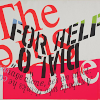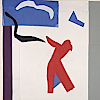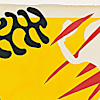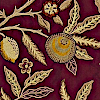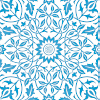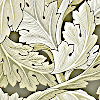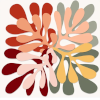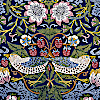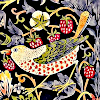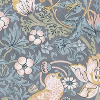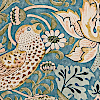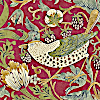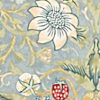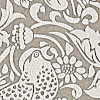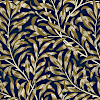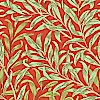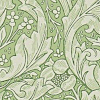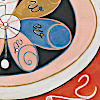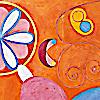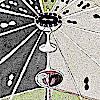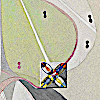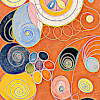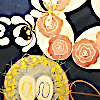Interior design style revivals
27 Jul 2023 11:26 pmOne of the most frequent and naively uninformed comments on long viral posts about art nouveau and art deco that one sees go around Tumblr is "Why can't this come back in style?"
Of course, art nouveau did come back into style in the 1970s - reinterpreted with neon colors usually, and pretty exclusively in prints and advertising art rather than architecture and object design. And art deco came back in a big way in the interiors and furniture and object design, even the architecture, of the 1970s - 1980s. Indeed, there's a strong thread of art deco (reinterpreted through a colorful postmodern lens) in the dominant design movement of the decade, Memphis Milano.
And in fact, Memphis Milano had an echo in the architecture and design of the early 2000s/late 90s. We were walking home tonight and I was making fun of some too-large, too-expensive streetlights which couldn't be more clearly Memphis Milano, but they were installed in the early noughts, my wife informs me; and when you know that, it checks out. In the noughts there was an attempt to use the shapes of Memphis Milano with a narrow color palette and lots of, like, frosted glass, and call it sophisticated. Which, when I look back on it, is one of the strangest design revivals I can think of, since colorful and playful are the overwhelming mood of Memphis Milano.
Anyway, it's not really a big surprise that people don't think of these when they are introduced to art nouveau and art deco with images of the most expensive and iconic design: mansions and grand hotels and public monuments and movie stills from The Great Gatsby. Those may help you grasp the shorthand, but they represent a tiny slice of the movement that's not representative of its appearance in the lives of ordinary people. The middle class was into art deco, but it didn't look any more like a grand art deco ballroom than ordinary working women looked like movie stars in 1920s formal gowns.
Of course, art nouveau did come back into style in the 1970s - reinterpreted with neon colors usually, and pretty exclusively in prints and advertising art rather than architecture and object design. And art deco came back in a big way in the interiors and furniture and object design, even the architecture, of the 1970s - 1980s. Indeed, there's a strong thread of art deco (reinterpreted through a colorful postmodern lens) in the dominant design movement of the decade, Memphis Milano.
And in fact, Memphis Milano had an echo in the architecture and design of the early 2000s/late 90s. We were walking home tonight and I was making fun of some too-large, too-expensive streetlights which couldn't be more clearly Memphis Milano, but they were installed in the early noughts, my wife informs me; and when you know that, it checks out. In the noughts there was an attempt to use the shapes of Memphis Milano with a narrow color palette and lots of, like, frosted glass, and call it sophisticated. Which, when I look back on it, is one of the strangest design revivals I can think of, since colorful and playful are the overwhelming mood of Memphis Milano.
Anyway, it's not really a big surprise that people don't think of these when they are introduced to art nouveau and art deco with images of the most expensive and iconic design: mansions and grand hotels and public monuments and movie stills from The Great Gatsby. Those may help you grasp the shorthand, but they represent a tiny slice of the movement that's not representative of its appearance in the lives of ordinary people. The middle class was into art deco, but it didn't look any more like a grand art deco ballroom than ordinary working women looked like movie stars in 1920s formal gowns.





















